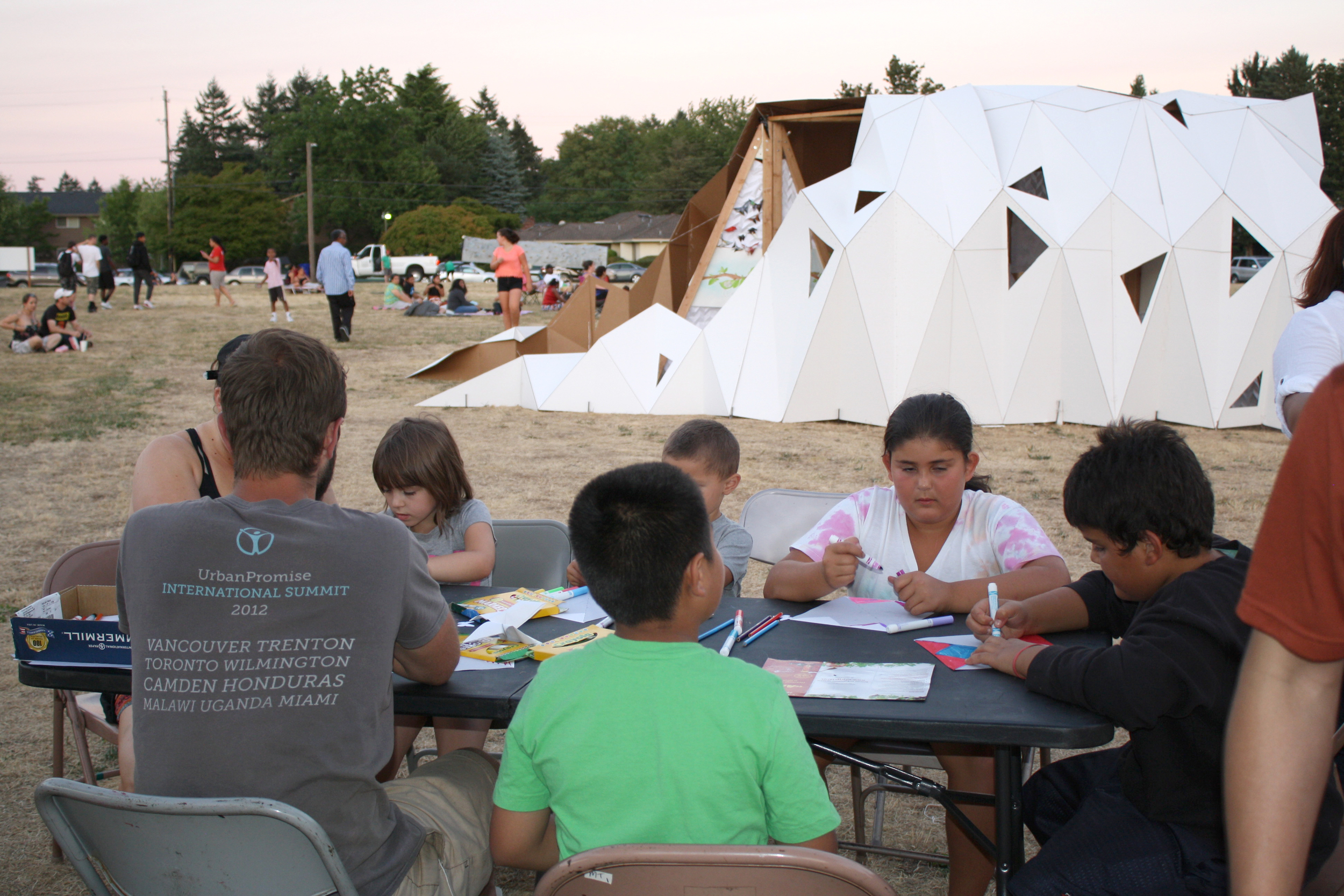Gateway Pavilion
Project Origin
The Center for Public Interest Design (CPID) is part of a team working on the new design of Gateway Park in partnership with PLACE, the principal designers. The new park design emphasizes engaging all ages and the rich cultural diversity which makes the gateway area unique in Portland. A large portion of the design process focused effort towards creating spaces and opportunities for different stakeholders to interact with a range of activities coexisting in harmony. As successful as the design process was in initial community engagements, this engagement time was unfortunately shortened due to delays in project contracting. As a consequence, it became essential for the project team to identify other opportunities for community engagement, and means of sustaining this engagement after the design process was completed. In the summer of 2015, the CPID led a design-build project in the Gateway community in Portland, Oregon. In preparation for a community event on the site of the future Gateway Park, a team of CPID designers and volunteers from PSU and PLACE erected a giant, white, origami structure; the Chrysalis Pavilion. This structure intended to engage community and explore the question: What role can designers play to keep the community connected to the design process during the period between end of schematic design and a project’s completion to contribute to a project’s success?
Project Description
As one of Portland’s most underserved neighborhoods, the investment in Gateway Park has the potential to be a much-needed catalyst for change in the area. Considering the potential for post-design, pre-construction community engagement, the CPID looked specifically for opportunities to engage the community that would be socially activating and aesthetically appealing. The success or failure of a public amenity like a park can often depend upon the sense of ownership and investment a community feels in a project. Activating this sense of ownership was the primary intention for the CPID in the design of the Chrysalis pavilion. The pavilion’s origami design created a spatial experience and tactile exchange, attempting to elicit an abstracted sculptural representation of the encasing shell which constitutes the final stage of the caterpillar’s evolution into a butterfly.
The pavilion design was led by CPID Intern Therese Graf and Master of Architecture student Karina Adams. Therese joined the CPID from the Universitat Internacional de Catalunya in Barcelona while finishing her Master of International Cooperation in Sustainable Emergency Architecture. Karina is among the inaugural class of students to receive PSU’s Graduate Certificate in Public Interest Design and was taking on this project as part of her certificate fieldwork.
Installation Design
Using large sheets of folded cardboard supported through the integration of repurposed triangular frames, the pavilion created an embracing passageway for participants to meander through. Trading personally constructed butterflies ordained with drawings and expressions of intended park use for premade butterflies containing plant seeds, participants engaged in a playful activity while motivating a platform for discussion and offering a survey of preferred park activities. This imagery foreshadows the butterfly theme that artist Horatio Law has planned for the park’s public art component and represented the metamorphosis of the Gateway Park from a vacant turf lot into the beautiful park to come. The butterflies (with hopes for the park written on the wings) were pinned to the pavilion shell to be shared with the community, and each child and adult was encouraged to take it home as a memento of their involvement in the design of their park.
Site plan, courtesy of PLACE
Next Steps
The pavilion is the first of a series of projects the CPID hopes to take on in the community between now and the park’s completion. The site was also used as one of the pop-up performance locations during design research on CPID's Opera a la Cart project.





